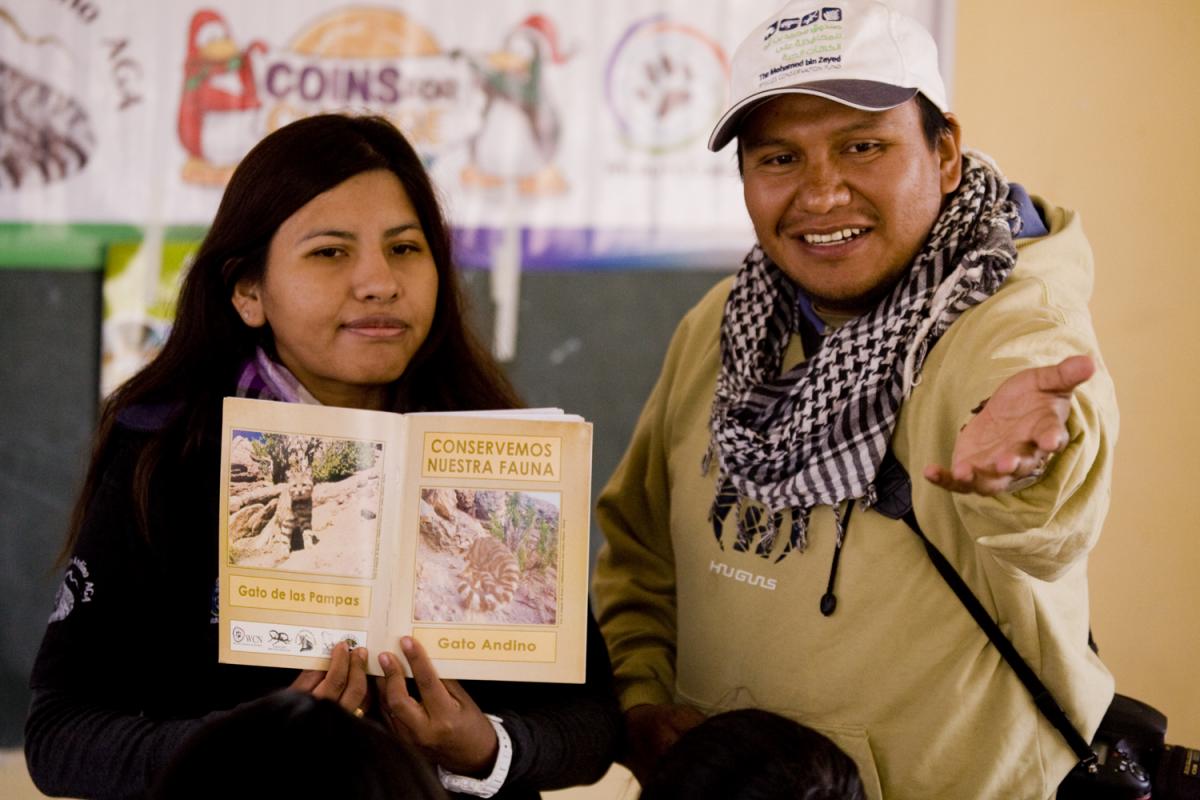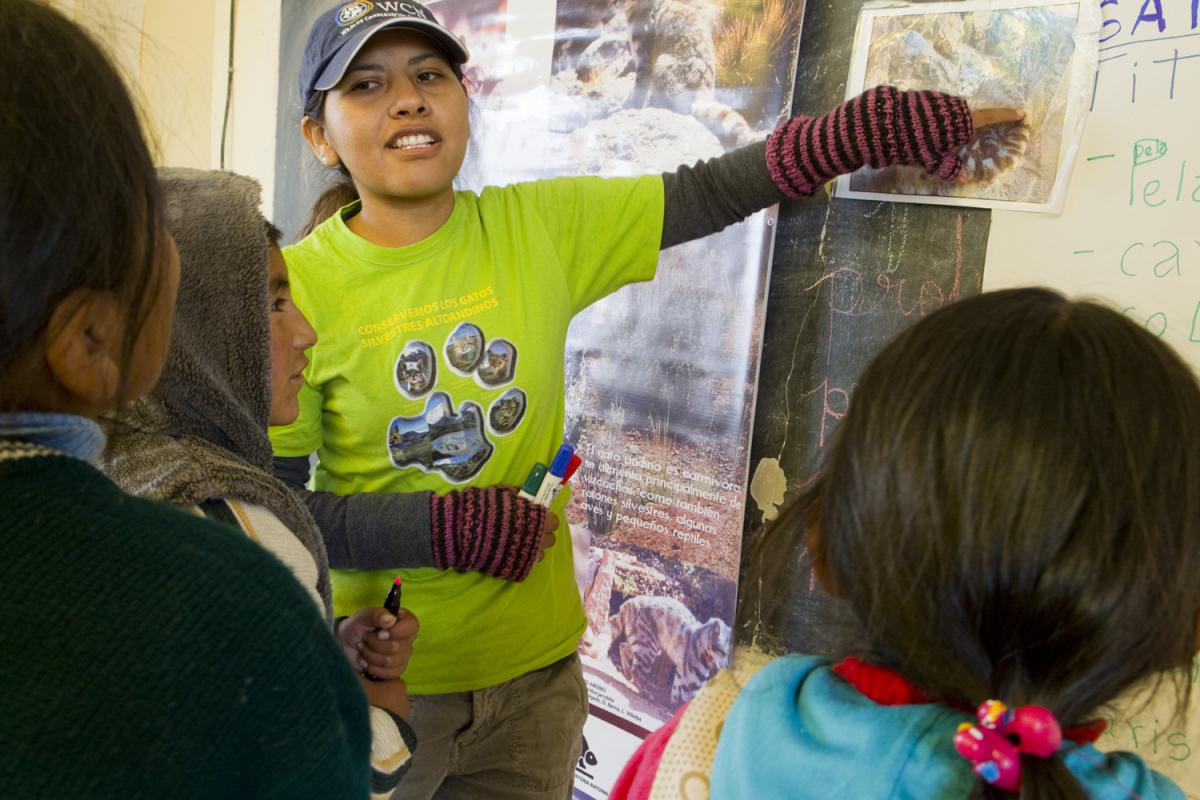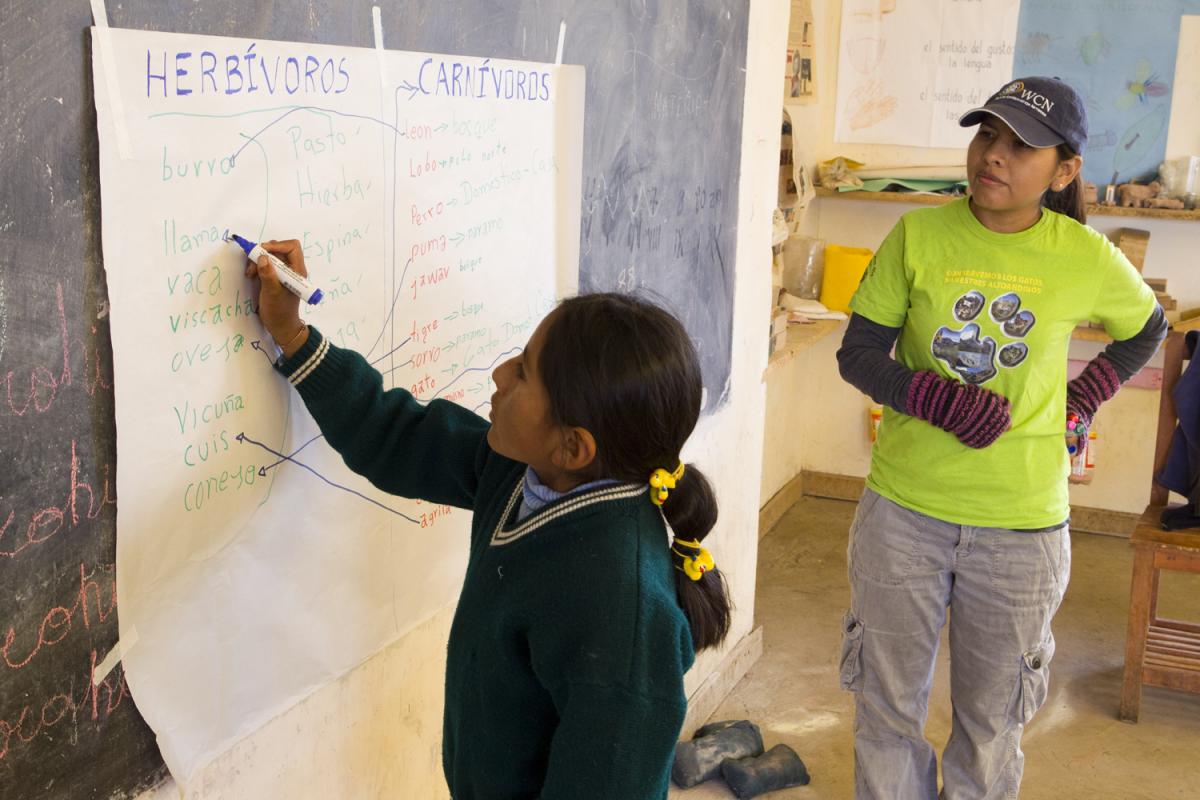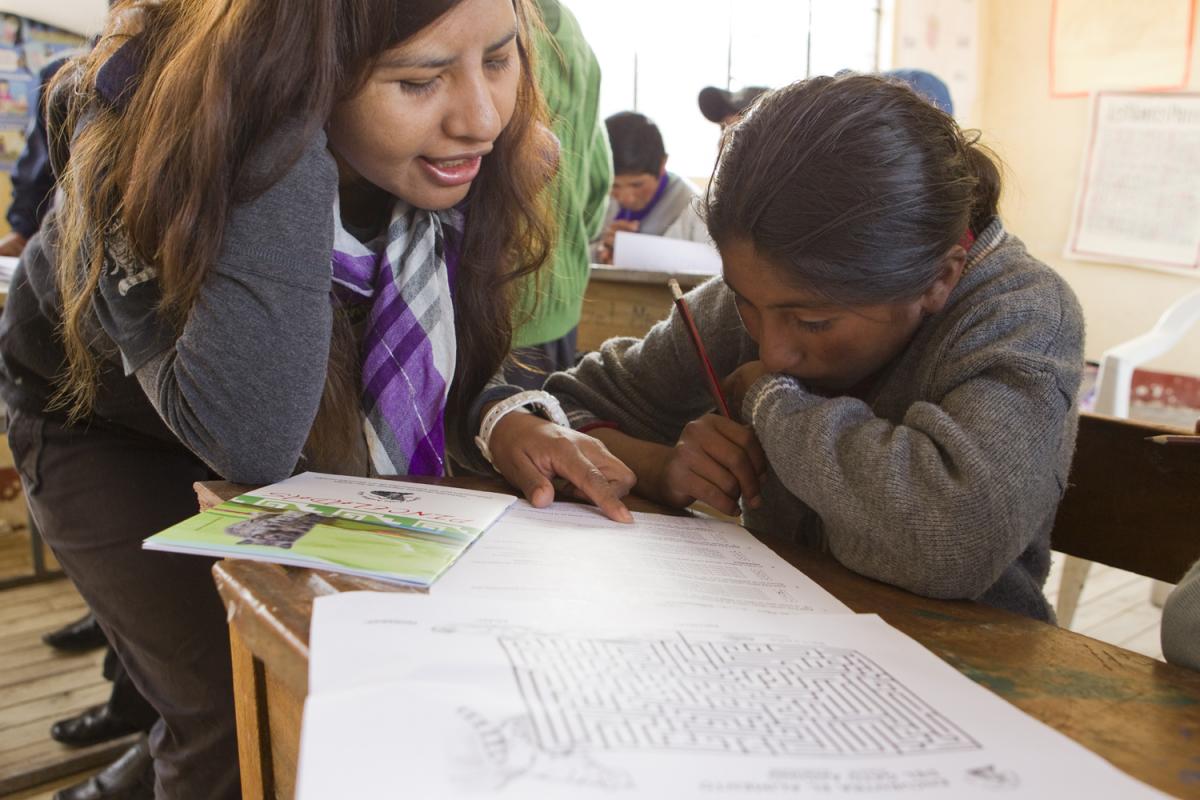CEC celebrates Alejandra Torrez
Alejandra Torrez shares her story working in the 'Andean Cat Education Program', an initiative aiming to achieve a permanent change in the perception and valuation of nature, especially the Andean cat as an emblematic specie of the Andes in Bolivia. Alejandra is a member of the IUCN Commission on Education and Communication (CEC) and shares us about some challenges she faced when working with communities, the methodology applied to develop the program and some key results.
The Andean Cat Education Program is an innovative strategy to increase knowledge and raise awareness about the relevance of the Andean cat and its environment, valuing natural resources and its relationship with communities. The material and activities are adaptable to a variety of audiences, such as elementary school students, technical staff and government agencies. This allows us to be versatile when delivering the conservation message, using the Andean cat as our flagship specie.
The tangible results can be observed in the change of attitude and the evaluation of the natural resources of both the students and other actors, through education and community participation in which reports are delivered to local authorities and information is exchanged on the species, knowing the problems of social development and interaction with the environment.
192 actors participated in the educational workshops. The training team made up of 7 people: Juan Carlos Huaranca (Biologist from Bolivia), Lilian Villalba (Biologist from Bolivia), and four students from the Biology degree program at the Universidad Mayor de San Simón who were trained as environmental educators along with Sebastián Kennerknecht (United States wildlife photographer). The long-term impact on the education program contemplates an effect on the awareness and education processes that are developed in a transversal and continuity perspective. It is expected that soon the first results of a permanent change in the perception and valuation of nature will be obtained, especially the Andean cat as an emblematic specie of the Andes in Bolivia.
Alejandra Torrez shares her story
- What motivated you to start a career in this field?
The motivation to start this path has been to understand nature. When travelling I learned about the variety of ecosystems that exist, some accessible and others not, knowing different shapes and sizes of species such as birds and mammals and the opportunity to have them less than half a meter away. Seeing the beauty and radiance that they emit, the possibility of knowing new places to study and research motivated me and at the same time I was filled with concern about how these species are threatened by activities or actions that humans carry out.
- What are you most proud of?
I am proud to feel that I contribute to the conservation of different threatened species, such as birds, Andean cats, the habitat of many species, the landscapes and that they can be enjoyed by future generations. To manage to feel the same love for people as for species and nature.
- What was a major obstacle / challenge you faced?
Initially, the biggest obstacle was the susceptibility and mistrust of local communities to being deceived or used for personal gain, in the past many researchers sought personal gain. The challenge was to be able to get the financial resources available to carry out the planned projects.
- How did you overcome it?
Through lots of work with the local communities, achieving appreciation and identity within their community. The exchange of knowledge, reflections, dialogue, achieving commitment to nature, promoting effective and equitable governance of natural resources in the community, this added an intangible value for nature with emphasis on natural resources and responsibility in decision making.
- Which golden tip do you have for new comers who want to follow your path?
Commitment and connection with nature, overcome challenges that arise in the process of learning to transmit the importance of the conservation of threatened fauna, value the importance of biodiversity-people-nature interaction and development in education and communication.
- Is there anything else related to your professional achievements you would like to share with the CEC community?
Activities with knowledge transfer to students of different careers at the postgraduate level (master and doctorate), in the area of research and nature conservation. Knowledge changes attitudes, perceptions and the way of seeing society in the environment it is in, where development blinds us to see that our environment is fundamental to stay alive.





